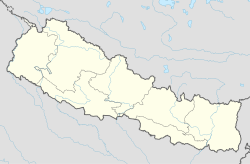| Dwarika's Hotel | |
|---|---|
 Dwarika's Hotel, Kathmandu. | |
| General information | |
| Location | Kathmandu, Nepal |
| Coordinates | 27°42′17″N85°20′34″E / 27.70472°N 85.34278°E |
| Other information | |
| Number of rooms | 80 |
| Number of suites | 48 |
| Website | |
| www.dwarikas.com | |
Dwarika's Hotel is a luxury hotel in Kathmandu, Nepal, located in the Battisputali neighborhood. The hotel is a collection of traditional heritage Newari houses centered around courtyards. It has over 80 rooms and 48 suites, and took over 30 years to construct. It has been recognized with the UNESCO Asia-Pacific Heritage Award for Culture Heritage Conservation for its commitment to preserving Nepali architectural traditions. [1] It was awarded the PATA (Pacific Asia Travel Association) Heritage Gold Award in 1980. [2]
